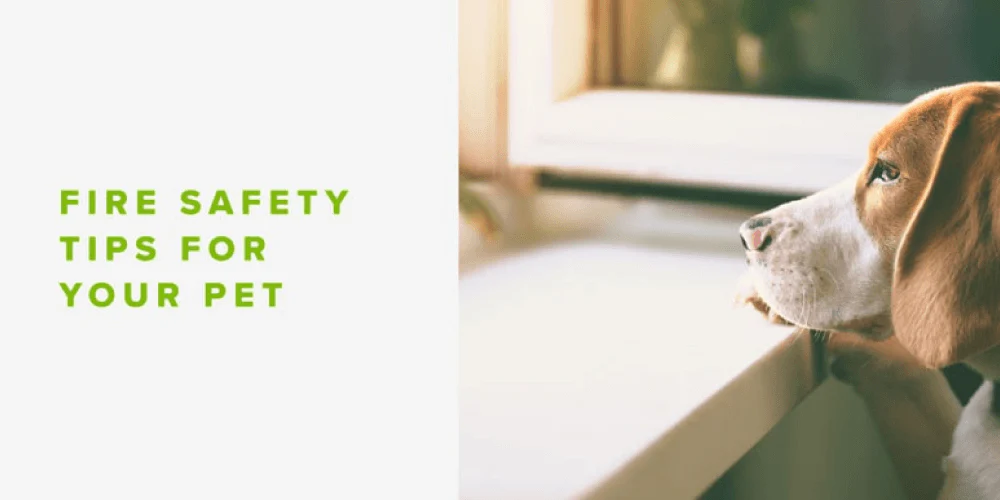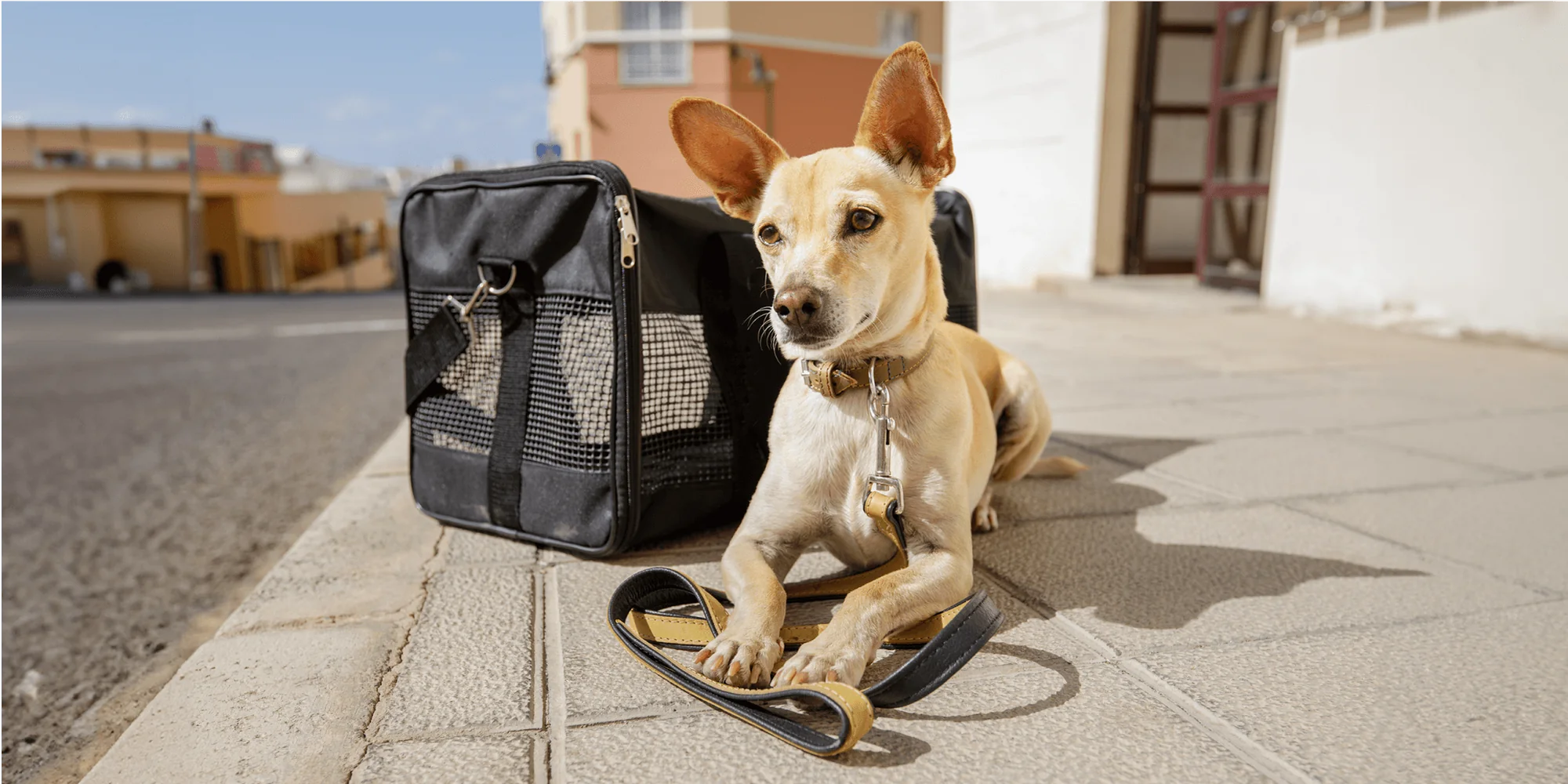5 fire safety tips for your pet

As we sink deeper into the dog days of summer, heat and sunshine take over and the certain parts of the world get dangerously dry. With fire season upon us, it’s important to keep safety top of mind.
In fact, Pet Fire Safety Day is July 15th, so It’s the perfect time to review your disaster emergency plan. If you don’t have one, now’s your time! When a disaster occurs, stress is unmanageably high and many of us can’t even think straight. Having a sensible, thought-out plan in place beforehand will literally be a lifesaver.
And it probably goes without saying that the family pet must be part of this plan. During unexpected chaos and confusion, animals can get spooked and bolt. Below are 5 tips to keep you connected with your pet and to keep them safe through any trials or tribulations.

- Monitor your pet’s activity for unusual behaviors – Because they can’t speak, we need to watch our pets closely to understand their moods and motivations. They may grow anxious during severe storms, as the barometric pressure changes. They may have trouble sleeping if the air quality is too poor during wildfire season. Tracking devices like the Whistle GO or Whistle GO Explore will monitor your pet’s normal behavior and alert you when something occurs that is off-rhythm.
- Track your pet with a GPS pet tracker – If your pet happens to take off in panic, you’ll be able to locate them quickly, saving valuable time and energy during a crisis. Because you can’t plan for emergencies, and the battery depletes faster when your pet’s out of Wi-Fi range, always keep your Whistle device charged. You may even want to invest in a solar charger to keep everything running when the power goes out.
- Microchip your pet and keep their ID tags up to date – While we hope this is never needed, a microchip offers an important lifeline. Be sure your contact information is registered and up to date with the microchip company, as well as your pet’s ID tags on their collar. Every time you move or your phone number changes, you need to alert the company and update the tags so you can be reached in the event someone finds your pet.
- Stock your emergency kit with pet supplies – A good rule is to stock your kit with a week’s supply of food. Just remember to add your pet’s food and medications to the kit along with your family’s food and medications. Also include water, bowls, can opener (if needed), leash, crate, and collar with ID tags. If medications are part of your kit, include prescriptions for those medications as well in case you need to obtain more before things return to normal. Another good idea is to have your pet’s medical and vaccine records on hand.
- Make appropriate travel arrangements to find your safe place – In case of evacuation, set up alternative housing that is pet-friendly. Keep a list of nearby friends, family, and pet-friendly hotels in your emergency kit. Keep in mind the Pets Evacuation and Transportation Standards Act (The PETS Act) is a federal law that allows the Federal Emergency Management Agency (FEMA) to provide funding to states and localities for the creation, operation, and maintenance of pet-friendly emergency shelters.
Hopefully you will never have to enact your emergency plan, but if you do, being properly prepared will make all the difference to you and your family. Write up your plan, assemble your emergency kit, and enjoy the peace of mind that comes with knowing that everyone in your household – including your 4-legged family members – have a plan to stay safe.









